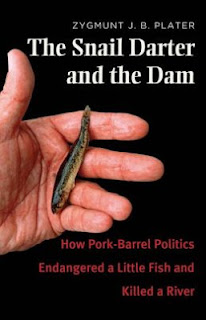 Harvard, the University of Oxford, Ohio State University and the European University Institute.
Harvard, the University of Oxford, Ohio State University and the European University Institute.Stampnitzky applied the “Page 99 Test” to her new book, Disciplining Terror: How Experts Invented "Terrorism", and reported the following:
My book, Disciplining Terror, explains how political violence became "terrorism," and how this transformation led to the current "war on terror." It does this by tracing the political and academic struggles through which experts made terrorism, and terrorism made experts, arguing that the expert discourse on terrorism operates at the boundary—itself increasingly contested—between science and politics, and between academic expertise and the state.Learn more about Disciplining Terror at the Cambridge University Press website.
Page 99 discusses "quantification," the (often messy) process of turning social phenomena into numbers. As I note there:A major theme in the sociological literature on quantification has been that counting and commensuration are social processes, and, as such, require work to make them happen... quantification...can be seen as a means of standardizing entities that may have an unruly presence in the world, and of making them subject not just to science but also to governance.While this certainly does not sum up the book as a whole, it does introduce one of its major themes: the question of how the rather inchoate phenomenon of "terrorism" has been made concrete through practices of knowledge.
A core argument of the book is that "terrorism" is not a natural category, but one that has been socially and historically constructed. As with any political concept, the question of how to define "terrorism" has been contentious. Yet the problem of defining terrorism has been particularly difficult to resolve, with even terrorism experts unable to agree on such fundamentals as whether or not states can commit terrorism. Various surveys have counted hundreds of different, often contradictory, definitions in use at any given time. And quantification is but one method through which experts tried to "discipline" the fuzzy concept of terrorism. In the chapter of which page 99 is a part, I describe how researchers the RAND Corporation, a federally funded think tank in Southern California, developed the first terrorism database by clipping newspaper articles, making entries on index cards, and eventually entering these into a computer database, thus turning the new concept of "terrorism" into an object of knowledge, about which experts could then ask questions such as "Is the rate of terrorism increasing or decreasing?" The difficulty, of course, is that in order to construct such a database, humans must make judgments about whether any particular incident is, or is not, an act of terrorism, and thus, whether or not it should be included. And what makes these acts of judgment particularly fraught in this case is that to classify an event as "terrorism" is not simply to make a social or scientific judgment, but to include it in a phenomenon which has come to be popularly understood as fundamentally immoral and illegitimate.
Writers Read: Lisa Stampnitzky.
--Marshal Zeringue


























